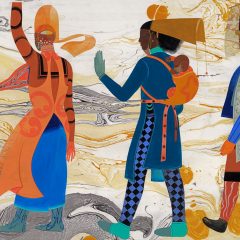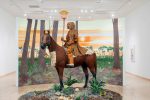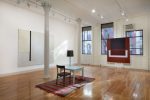I must admit I am not well versed on the subject of institutional critique. So, reading the press blurb for “The Artist and Social Communication,” a talk by Richard Birkett and Martin Beck at Tyler School of Art’s gallery, Temple Contemporary, I was curious about what awaited me. The talk resulted in a stimulating discussion about the politics behind artistic expression and its intrinsic relation to the public sphere.
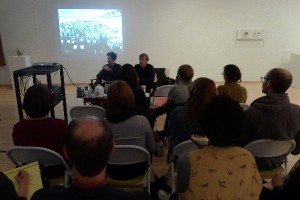
Birkett, curator of alternative New York gallery, Artists Space, began his portion of the discussion by speaking on the mechanisms and qualities of exhibition design by relating his thoughts to the works of the late artist, Christopher D’Arcangelo. Noted for his activist-style approach, D’Arcangelo’s work serves as the essential foundation of the movement deemed “institutional critique,” whose goal is to challenge the accepted modes and channels of public artistic presentation.
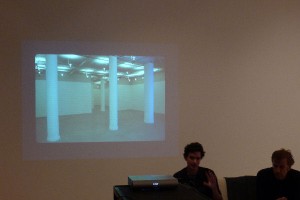
In particular he cited D’Arcangelo’s piece, “Four Texts, for Artists Space,” which was on display in a group exhibition at Artists Space in 1978. D’Arcangelo’s contribution to this show was particularly cerebral. As Beck noted, the impact was made by its marked lack of presence—D’Arcangelo chose to leave his name off of the publications for the show to emphasize his refusal to participate in the business, as it were, of the art world. The subsequent influence of D’Arcangelo’s radical “guerilla” performances and written works resonates throughout contemporary art—as evidenced recently by the frenzy over UK street artist, Banksy, who displays exclusively in public spaces, or rather, appropriates private and public property for his exhibitions.
Beck, an artist whose work focuses on the politics of display, followed Birkett by illustrating the ways in which he has examined this subject in his own work. He recreated an intriguing 1948 invention, “StrucTube,” originally created by George Nelson and manufactured by his firm. Beck explained that Nelson’s concept caught his attention first by its unusual debut: serving as a method for displaying work done by artists for greeting cards. “StrucTube” is simply composed—its metal poles interlock (without the need for tools or knowledge of assembly) into a grid-like structure that serves as a sort of freestanding gallery. His primary interest developed out of a curiosity in the utility and function of this “liberated exhibition.”
In recreating the “StrucTube” system, Beck set out to examine the different potential manifestations of the invention: “acting” within a piece to examine its sculptural and formal qualities and its optional use as a commodity to be rented out. In the first manifestation, Beck used “StrucTube” for its functional/ aesthetic qualities, creating a sleek, modern work of art that asks us to consider reinventing traditional modes of display. In the second, Beck attempted to rent out the reconstructed system for its original intention as a system for displaying shows, stipulating that his name be excluded from promotional materials and that he be paid a rental fee for its use. The latter interestingly resulted in discussions about his choice to remove himself from his role as an artist.
Overall, Birkett and Beck both illustrated valid points about the curious political structure of artistic display. This being said, there are two sides to every political coin. Where would the art world be without the benefactors of the Renaissance?—namely, the church and wealthy merchant families. The contemporary equivalent of patrons go currently by the names of government funding and donations from private organizations.
The systems inherent in the politics of artistic display are just that, inherent. They provide a context for art to exist within. Art’s financiers allow facilities, such as museums and galleries, to exist., thus making works of art accessible to the public. In turn this provides revenue for artists and those working in the arts. Yes, it is a capitalist system, but the relationship of artist to space to viewer is a circle that has no beginning. It exists because of this system. This is not to say that the discussion, and the works stemming from said discussion, should not continue. Rather, their continuation is necessary as it fosters the continued growth and evolution of artistic thought and work.


